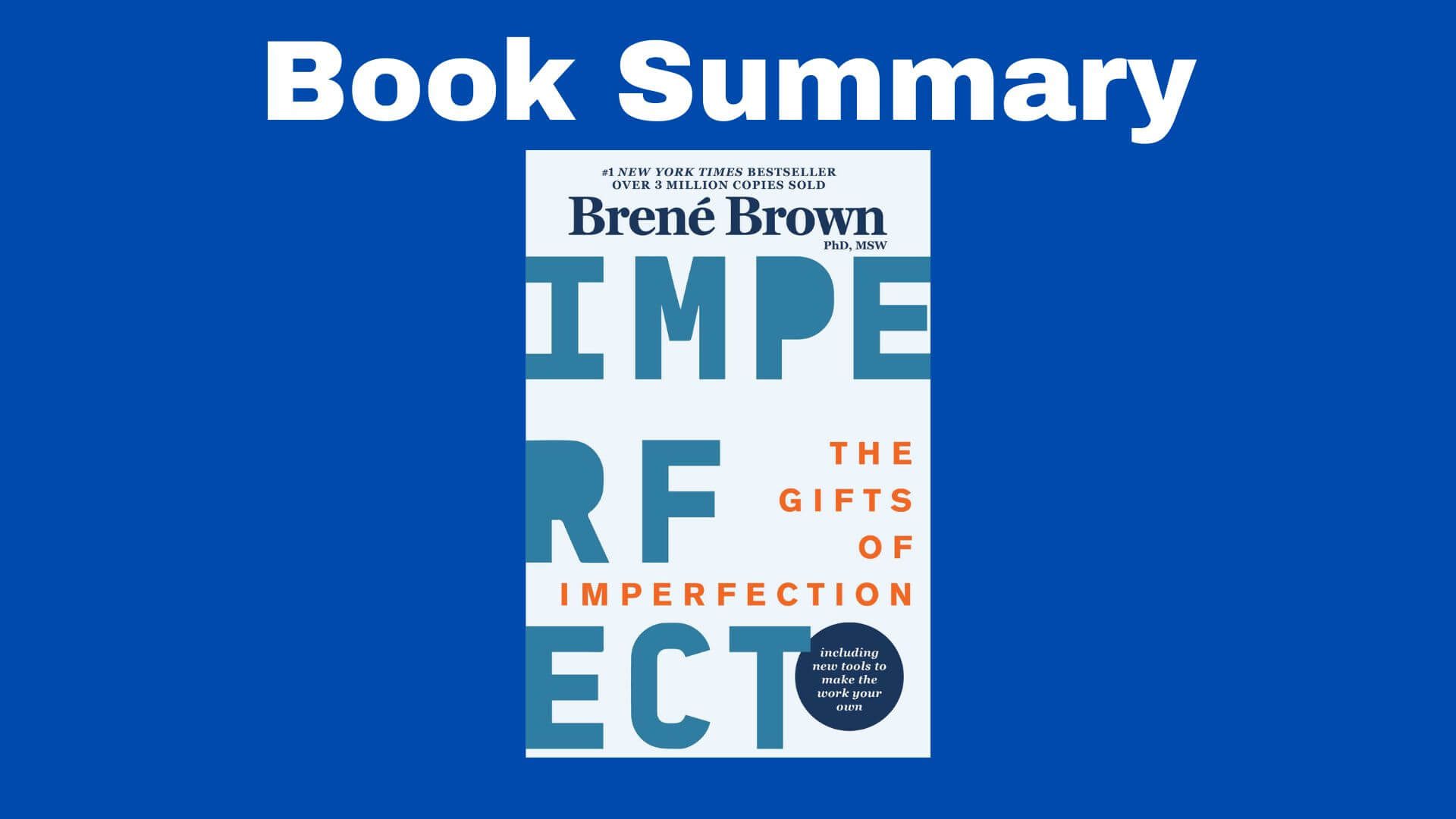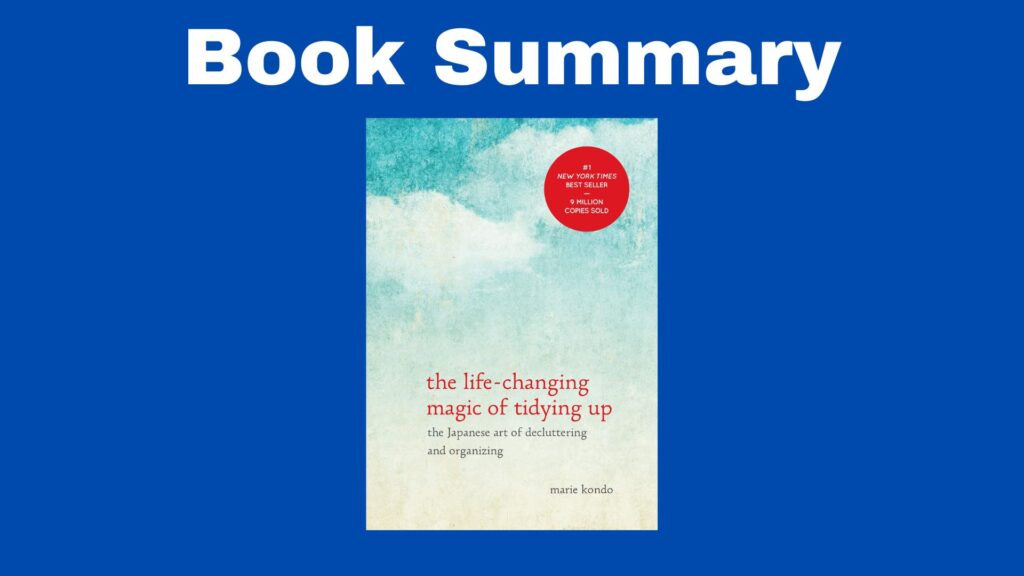The Book in Three Sentences
In this book summary of The Gifts of Imperfection, you’ll learn the ten guideposts that will lead you to wholehearted living. For those unfamiliar, Brown is an expert in vulnerability, courage, worthiness, and shame. In this book, she tries to teach people how to engage with the world while feeling worthy.
The Gifts of Imperfection Summary
The author dedicated her life to researching difficult emotions: shame, fear, and vulnerability. As part of her research, he realized that most people hide their true selves. There are innumerable benefits to those who can embrace their imperfections and vulnerabilities. Brown called this idea wholeheartedness and she analyzed different stories to find patterns. Eventually, she concluded that to live a wholehearted life, the only thing you need is to love yourself.
This is what people who love wholeheartedly do: they rest, they play, they trust, they’re authentic, they practice gratitude, they’re creative, they’re intuitive, and they have a sense of belonging. This is what people who live wholeheartedly don’t do: they don’t seek perfection, they ignore certainty, they’re never exhausted, they don’t care about being cool, and they don’t judge others.
Introduction: Wholehearted Living
Wholehearted living comes from a place of worthiness. It’s accepting one’s vulnerabilities and imperfections but feeling worthy at the same time. The tools we need for wholehearted living are courage, compassion, and connection.
Courage, Compassion, and Connection: The Gifts of Imperfection
To cultivate worthiness, we must practice courage, compassion, and connection. We don’t do these things out of nowhere, we do them out of habit.
To deal with shame:
- We want empathy, not sympathy
- We don’t want to be judged
- We don’t want to feel disappointment
- We don’t want to blame anyone
- We don’t want to minimize
- We don’t want to compare ourselves to anyone and we don’t want to compete
- We don’t want to make anyone uncomfortable
- We don’t want anyone to give us advice
Courage, compassion, and connection are the gifts of imperfection.
- Courage: wholeheartedness requires you to be open and honest about who you are and about your feelings. In other words, ordinary courage is about being vulnerable. The fascinating thing about courage is that it has a ripple effect. The more you practice it, the more everyone around you is willing to practice it too.
- Compassion: practicing compassion is scary and like courage, it puts you in a vulnerable position. To become compassionate, we must accept ourselves and others and the best way to practice compassion is by setting boundaries. Setting boundaries is healthier than shaming and blaming.
- Connection: connection is about making people feel seen, heard, and valued. Humans are biologically wired for connection. We want to connect emotionally, physically, spiritually, and intellectually. Connecting digitally can never replace face-to-face interaction.
Exploring the Power of Love, Belonging, and Being Enough
There’s no replacement for love and belonging and to experience those things, we must feel worthy of them. The fastest way to get there is to let go of other people’s opinions, as well as the stories we tell ourselves. Put simply, we need to feel like we’re enough. There are no prerequisites for worthiness, you must believe you’re worthy now. In other words, you don’t need to lose weight, make money, get a promotion, marry someone, or have kids to be worthy.
Love and belonging are uncertain and defining them is tricky because they can’t be measured. One thing’s for certain though, love and belonging are human needs. Love takes place when we let ourselves be seen. Love is a connection between two people. To love others, we must first love ourselves. Belonging is a primal human desire. Trying to fit in and looking for other people’s approval seem like shortcuts to belonging, but on the contrary, they are obstacles that get in our way. Belonging happens when we’re authentic and imperfect. To be accepted, we must first accept ourselves.
Nobody wants to be uncomfortable, but discussing complex topics like shame, vulnerability, love, connection, and happiness demands discomfort. Without facing our fears, we never get to learn or grow. To become the best version of ourselves, we must talk about “the things that get in the way”.
To deal with shame, we must understand some things:
- Shame is universal and we all deal with it
- We’re all afraid of shame
- Not talking about shame gives us control
Shame is the opposite of worthiness. It’s the idea we’re not enough and it’s paralyzing. Luckily, we can develop shame resilience. This is being able to recognize shame, move through it, and maintain authenticity. Do this enough times and you’ll develop courage, compassion, and connection. To feed shame, it needs secrecy, silence, and judgment.
The author distinguishes between shame and guilt. Guilt is doing something bad and shame is the idea that you are bad. In other words, guilt is about behavior and shame is about identity. The effects of guilt are often positive, but the effects of guilt are destructive. Shame looks different depending on the person. Some people move toward (trying to please others, for example) while others move against (by being aggressive, for example). Notice which type of person you become when you feel shame and what courageous action you could take to get out of that mental state.
Guidepost #1: Cultivating Authenticity: Letting Go of What People Think
Authenticity is a practice and it shows in the choices you make regularly. Ideally, each choice we make is about being honest and real. We want to be authentic because authenticity attracts people, but it also feels exhausting. Authenticity is ignoring who we’re supposed to be and embodying that idea. To be authentic, we must embrace our imperfections, be vulnerable, and believe we’re enough.
Authenticity isn’t safe. Quite the contrary. It requires you to step out of your comfort zone and know that you might be criticized and ridiculed for it. The alternative to authenticity is to try to be liked and this can lead to anxiety, depression, addiction, anger, blame, resentment, and grief.
Guidepost #2: Cultivating Self-Compassion: Letting Go of Perfectionism
The author starts this section by explaining what perfectionism is not:
- Doing your best and perfectionism aren’t the same. While the former is about growth and achievement, perfectionism is an unattainable goal that’s unhealthy.
- Perfectionism doesn’t qualify as self-improvement. Perfectionism is about achieving things to please others.
Brown then proceeds to explain what perfectionism is:
- Perfectionism is a belief system that’s both addictive and self-destructive.
- Perfectionism is unattainable, so by definition, we’ll never get there.
- Perfectionism is addictive. Instead of questioning it, we want to get everything right.
- We all experience shame and blame because that’s what makes us human. Perfectionism exposes us to those feelings even more.
To deal with perfectionism, we must express our imperfections. As a result, we’ll find courage, compassion, and connection. Additionally, to practice authenticity and embrace imperfection, we need self-compassion. Self-compassion has three main elements: self-kindness, common humanity, and mindfulness.
- Self-kindness is being understanding of ourselves when we fail
- Common humanity is the idea that we all struggle with inadequacy
- Mindfulness is examining our feelings fairly. As a consequence, we don’t want to suppress or exaggerate our emotions but simply accept them.
Guidepost #3: Cultivating a Resilient Spirit: Letting Go of Numbing and Powerlessness
Resilience is the ability to recover from adversity. Some people are better than others when it comes to dealing with hardship. You can go from trauma to whole-hearted living by staying mindful and authentic. The author refers to the things we do to bounce back as protective factors.
Resilient people have some common protective factors:
- They’re good at problem-solving
- They seek help
- They believe they can manage their feelings
- They rely on social support
- They connect with family and friends
Resilient people also have spirituality. This is the idea that we’re all connected by a higher power. Despite what we might think, this idea isn’t related to religion. Spirituality gives us perspective, meaning, and purpose.
Resilient people also:
- Cultivate hope
- Practice critical awareness
- Let go of numbing
Hope isn’t an emotion but a way of thinking. Hope takes place when we set realistic goals, we figure out how to achieve those goals, and we believe in ourselves. More importantly, hope is something we can learn. Hopelessness and self-doubt, on the other hand, are having a fear of disappointment, entitlement, and performance pressure. Hopelessness leads to powerlessness.
The modern world tells us what to do and how often we should do those things and this is overwhelming. To keep those messages and expectations in check, we need critical awareness.
We all do things to numb feelings like vulnerability, pain, and discomfort. The worst way to do this is through addictions. Examples of such behaviors include addiction to drugs, food, alcohol, sex, work, gambling, busyness, shopping, perfectionism, and social media. The problem is that when you numb your emotions, you numb both the bad ones, as well as the good ones.
Guidepost #4: Cultivating Gratitude and Joy: Letting Go of Scarcity and Fear of the Dark
Joyful people practice gratitude regularly. They do it through journaling, meditating, praying, or creating art. Joy isn’t the same as happiness. While happiness depends on external events, joy depends on spirit and gratitude. When hard times happen, you’ll be able to endure them thanks to gratitude and joy.
Guidepost #5: Cultivating Intuition and Trusting Faith: Letting Go of the Need for Certainty
Intuition is perceiving truths or facts without necessarily having to rely on a rational process. Sometimes we demand certainty in a world that’s full of uncertainties. When that happens, you can connect with your intuition and try to find the answers you’re looking for. Similarly to intuition, faith is the inner place where we find the strength to believe in the things we can’t see. By embracing faith, you let go of your fear of uncertainty.
Guidepost #6: Cultivating Creativity: Letting Go of Comparison
Humans are naturally creative. We all have childhood memories of creativity, but those memories end when we turn eight or nine years old. This is the case because as soon as we try to fit in and be better than someone else, creativity stops. This is also known as comparison and it’s a way of conforming and competing. Comparison forces us to be like everyone else but better. One of the fastest ways to ruin joy is to compare yourself to someone else. To make a unique contribution, you need creativity. Creativity is also a great way to cultivate meaning. To let go of comparison, bring awareness to it.
Guidepost #7: Cultivating Play and Rest: Letting Go of Exhaustion as a Status Symbol and Productivity as Self-Worth
An integral part of wholehearted living is play. Play comes in the form of sports, crafts, and hobbies. There are numerous benefits to engaging with play: it develops empathy, shapes the brain, and helps us navigate social groups. In other words, to be healthy and function well in society, you need to play. There’s no purpose to play, you just do it for its own sake. Similarly, you also need rest. The consequences of not getting enough sleep are tremendous.
Guidepost #8: Cultivating Calm and Stillness: Letting Go of Anxiety as a Lifestyle
Everyone suffers from anxiety, this is part of being a human. The solution isn’t to get rid of it but to be aware of it. Once you do that, you can cultivate calm and stillness. Calm is having perspective and mindfulness even in moments of difficulty and chaos. Stillness is simple to understand but not easy to put into practice. This is quieting your body and mind. As a side effect, you’ll be less anxious. This comes in the form of meditating, praying, sitting alone, or reflecting quietly.
Guidepost #9: Cultivating Meaningful Work: Letting Go of Self-Doubt and “Supposed to”
People feel connected somehow to meaningful work. We all have gifts and talents and we must use them to create meaningful work. This demands commitment, but if we don’t do it, our physical or emotional well-being will be negatively impacted. Also, we’re the only ones who can define meaningful work. For some, it’s playing sports, for others it might be practicing law.
Before we can share our gifts with the world, we must find them. Self-doubt can get in the way and our compulsion to fit in will tell us what we’re “supposed to” care about. Write down what your inner voice is telling you because if you ignore it, it will get louder. Overcoming self-doubt implies that we believe we’re enough regardless of how the world labels us.
Guidepost #10: Cultivating Laughter, Song, and Dance: Letting Go of Being Cool and “Always in Control”
Laughter, song, and dance are ways to express ourselves. When we do those things, we create an emotional and spiritual connection. Music moves us emotionally. Dancing makes us vulnerable, but it’s also an innate ability. We’re wired to move rhythmically. Wanting to look cool and in control is the best way we have to minimize vulnerability. The problem is that when we do that, we betray our very essence. Allow yourself to be free and let those around you do the same. Whatever you do, never put them down, make fun of them, ridicule their behavior, or shame them. Whenever there’s an option, choose to laugh, sing, and dance.
Further Reading
If you enjoyed this book summary of The Gifts of Imperfection, you might also like the following summaries:




